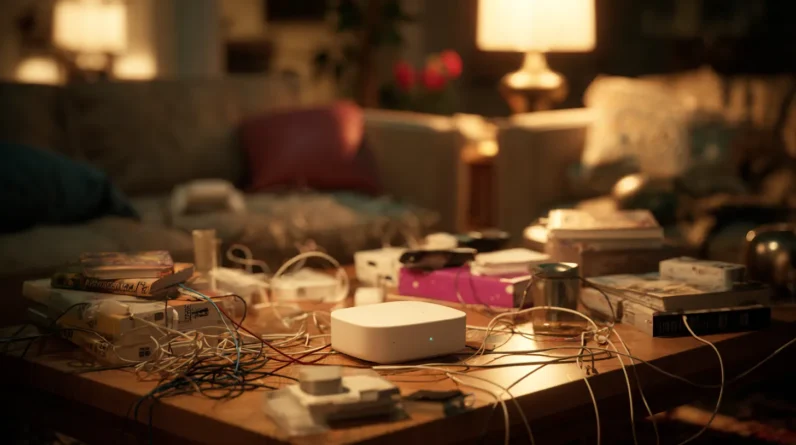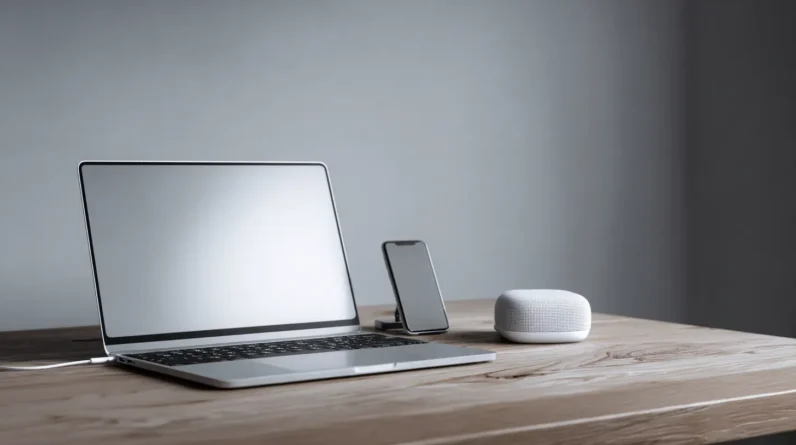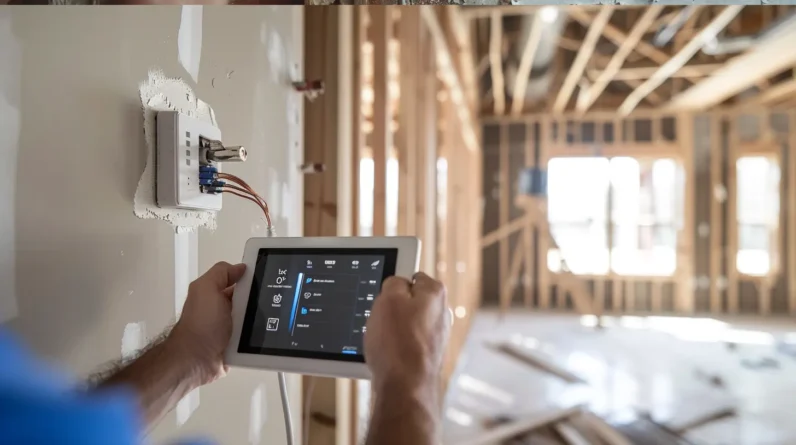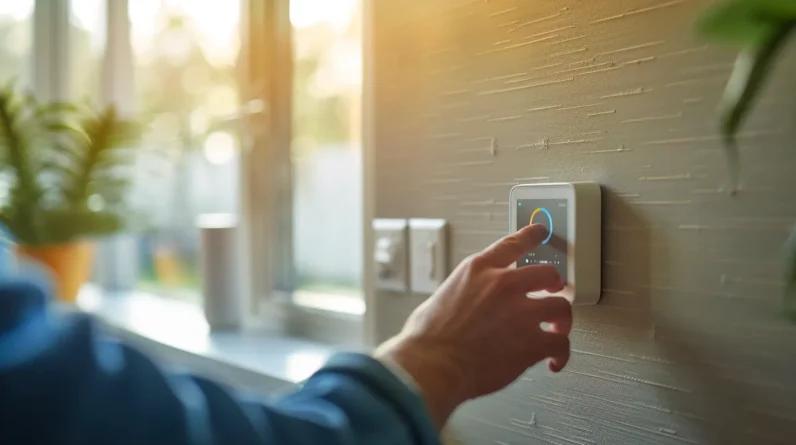
In the ever-evolving world of smart home technology, ensuring the seamless functioning of your devices is of utmost importance.
From thermostats and security systems to voice assistants and smart appliances, the interconnectedness of these devices demands regular maintenance.
This article explores the key practices for smart home maintenance, offering detailed insights on firmware updates, sensor cleaning, network optimization, and troubleshooting common issues.
By following these expert tips, you can enjoy a hassle-free and efficient smart home experience, giving you the freedom to focus on what truly matters.
Key Takeaways
– Regularly checking and updating firmware of smart home devices is essential for optimal performance and security.
– Cleaning and calibrating sensors periodically ensures accurate readings and functionality.
– Optimizing network connectivity through strong passwords, strategic placement of routers, and regular software updates is crucial.
– Troubleshooting common issues promptly helps maintain optimal network connectivity and device performance.
Checking and Updating Firmware
It is essential to regularly check and update the firmware of your smart home devices to ensure optimal performance and security. Firmware refers to the software that is embedded in the hardware of your smart home devices, controlling their functionality.
Updating firmware brings several benefits, such as improving device performance, adding new features, and fixing security vulnerabilities. However, there are also risks associated with firmware updates, such as the possibility of introducing bugs or compatibility issues.
To minimize these risks and make the most out of firmware updates, it is important to follow best practices. First, before updating the firmware, read the release notes or changelog provided by the manufacturer. This will give you an overview of the changes and improvements brought by the update.
Additionally, it is recommended to back up any critical data or settings on your smart home devices before proceeding with the firmware update. This will ensure that you can easily revert to a previous version if any issues arise.
It is advisable to update one device at a time to avoid overwhelming your network or experiencing compatibility issues. It is also important to ensure that your smart home devices are connected to a stable power source during the update process to prevent any interruptions or failures.
Always use official firmware updates provided by the manufacturer to avoid the risk of installing malicious or unauthorized software.
Cleaning and Calibrating Sensors
Regular maintenance of sensors is essential for ensuring accurate readings and optimal performance in a smart home environment. Sensors are responsible for detecting and measuring various parameters such as temperature, humidity, motion, and light. Over time, these sensors can become dirty or misaligned, leading to inaccurate readings.
To maintain sensor accuracy and reliability, the following steps should be taken:
– Clean the sensors regularly to remove dust, dirt, and debris that can interfere with their functionality. Use a soft cloth or a specialized sensor cleaning kit to gently wipe the sensors.
– Calibrate the sensors periodically to ensure they are providing accurate readings. Calibration involves adjusting the sensor’s settings to match a known reference value.
– Check for any physical damage or wear and tear on the sensors. Replace any damaged sensors to maintain accuracy.
– Keep sensors away from sources of interference such as direct sunlight, electromagnetic fields, or other electronic devices that can disrupt their readings.
– Update sensor firmware regularly to ensure they are functioning with the latest software enhancements and bug fixes.
Optimizing Network Connectivity
To enhance the performance of a network in a smart home environment, optimizing network connectivity is crucial. Network connectivity is the backbone of any smart home system, as it allows devices to communicate with each other and with the internet. Poor connectivity can lead to slow response times, dropped connections, and overall frustration. There are several ways to improve network connectivity in a smart home.
First and foremost, ensuring network security is essential. Smart home devices are vulnerable to cyber attacks, so it is important to implement strong passwords, use encryption protocols, and keep software up to date. This not only protects your personal information but also helps to maintain a stable network connection.
Another important factor in optimizing network connectivity is improving signal strength. This can be achieved by strategically placing wireless routers or access points throughout your home, ensuring that they are not obstructed by walls or other objects. Additionally, using mesh networking systems can help to extend the range and coverage of your network, eliminating dead spots and ensuring a strong signal in every corner of your home.
Troubleshooting Common Issues
Troubleshooting common issues is an important aspect of maintaining optimal network connectivity in a smart home environment. As technology continues to advance, more and more devices are being integrated into our homes, making it crucial to address any problems that may arise.
Here are some common issues you may encounter and how to troubleshoot them:
– Power management: One common issue is devices not receiving enough power. Make sure all devices are properly connected to power sources and consider using power strips or surge protectors to prevent overloading.
– Device compatibility: Compatibility issues can occur when devices from different manufacturers or with different protocols are connected. Ensure that all devices are compatible with each other and with your network.
– Network interference: Interference from other devices or neighboring networks can cause connectivity issues. Try changing the wireless channel on your router or moving devices away from potential sources of interference.
– Firmware updates: Outdated firmware can lead to performance issues. Regularly check for firmware updates for your devices and install them as necessary.
– Network configuration: Incorrect network settings can cause connectivity problems. Double-check your network configuration, including IP addresses, subnet masks, and gateway settings.
Frequently Asked Questions (FAQs)
How Often Should I Check and Update the Firmware on My Smart Home Devices?
Checking and updating the firmware on your smart home devices is crucial for troubleshooting connectivity issues. Regular checks ensure that your devices are up-to-date and functioning smoothly, enhancing the overall performance of your smart home system.
Is It Necessary to Clean and Calibrate the Sensors on My Smart Home Devices Regularly?
Regular cleaning and calibration of sensors in smart home devices is necessary to ensure accurate and reliable performance. Cleaning techniques and maintenance procedures should be followed according to manufacturer guidelines to optimize sensor functionality and prolong device lifespan.
What Are Some Effective Ways to Optimize Network Connectivity for My Smart Home Devices?
Optimizing network connectivity for smart home devices involves improving signal strength. This can be achieved through various methods such as positioning devices strategically, using signal boosters or extenders, and ensuring firmware and software are up to date.
How Can I Troubleshoot Common Issues With My Smart Home Devices?
To troubleshoot common issues with smart home devices, it is important to employ effective troubleshooting techniques. Identifying common problems such as connectivity issues or device malfunctions can help in resolving these issues efficiently and ensuring smooth operation of the devices.
Are There Any Specific Safety Precautions I Should Take While Performing Maintenance on My Smart Home Devices?
When performing maintenance on smart home devices, it is important to prioritize safety precautions. This includes disconnecting power sources, following manufacturer instructions, and using appropriate tools to avoid electrical shock or damage to the devices.
Conclusion
In the world of smart home maintenance, ensuring that devices run smoothly is essential.
By regularly checking and updating firmware, cleaning and calibrating sensors, optimizing network connectivity, and troubleshooting common issues, homeowners can keep their smart devices in top-notch condition.
Just as a well-maintained car effortlessly navigates the roads, a well-maintained smart home provides a seamless and enjoyable living experience.
Embrace the power of maintenance and let your smart home be the vehicle that takes you on a smooth and hassle-free journey.







